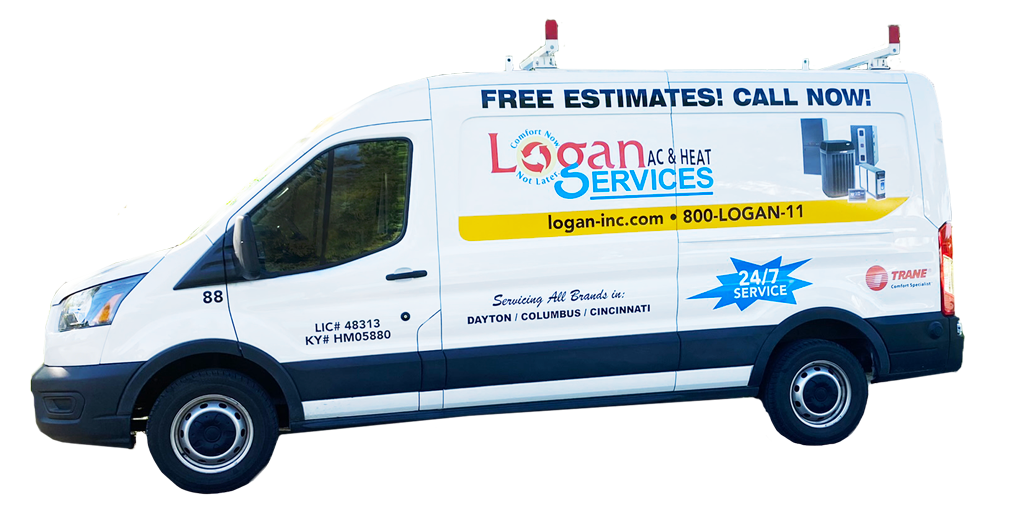If you want to ensure that your air conditioning system functions optimally throughout its lifespan, it’s essential to have a good understanding of the different components that make it up. This article explores everything you need to know about AC coils, including their function, types, components, and maintenance needs. From the basics of AC coils and their role in cooling systems to common issues to watch out for and important maintenance tips, this article covers it all.
The Basics of AC Coils
AC coils are an integral part of an air conditioning unit. They are responsible for removing heat and humidity from the indoor air and transferring it outside. The tubes contain a refrigerant gas that absorbs heat, and the fins allow that heat to be transferred to the outside air.
If you want your air conditioning system to work efficiently and effectively, keeping your AC coils clean and in good condition is crucial. Dirty AC coils can reduce the efficiency of your air conditioning unit and increase energy bills. In this article, we will discuss AC coils’ function, types, and components to help you understand how they work and how to maintain them.
Function of AC Coils

As mentioned earlier, the primary function of AC coils is to transfer heat and humidity from the indoor air to the outside. The cooling begins when the refrigerant
absorbs heat from the indoor air as it moves through the evaporator coil. The evaporator coil is typically located inside the air handling unit or furnace.
The refrigerant absorbs the heat and turns it into a gas. The gas is then transferred to the condensing unit, which is compressed and cooled back into a liquid. The condenser coil in the outdoor unit releases the heat and humidity absorbed from the indoor air to the outside atmosphere.
Absorbing and releasing heat and humidity is repeated continuously to maintain a comfortable indoor environment. A dirty evaporator coil can hinder this process and cause your air conditioning system to work much harder, increasing energy consumption and higher repair bills.
Types of AC Coils
There are two main types of AC coils: evaporator coils and condenser coils. These coils play a vital role in the cooling process.
- Evaporator Coils: These coils absorb heat and humidity from the indoor air as it moves through the air handler or furnace. The evaporator coil is typically located inside the air handling unit.
- Condenser Coils: These coils release the heat and humidity absorbed from the indoor air to the outside atmosphere. The condenser coil is located in the outdoor unit.

It’s worth noting that the evaporator and condenser coils can become dirty over time, hindering the cooling process. Regular cleaning and maintenance of both these types of AC coils are essential to ensure maximum efficiency and prolong the lifespan of your air conditioning unit.
AC Coil Maintenance and Efficiency
AC coils play an essential role in the cooling process of your air conditioning system. The evaporator coil absorbs heat from your home, and the condenser coil releases it outside. If these coils become dirty or malfunction, your AC unit will work harder, use more energy, and cost you more in repair bills.
To prevent these issues and keep your air conditioning unit running smoothly, regular maintenance is necessary.
Importance of Regular Cleaning

The most crucial aspect of AC coil maintenance is regular cleaning. The evaporator coil, located inside your house, tends to collect dirt, dust, and other airborne particles that can get trapped in its fins and reduce its efficiency. This can restrict airflow, causing your AC unit to work harder than it should, driving up your energy bills, and making it more susceptible to breakdowns.
Similarly, the condenser coil, located outside your home, can accumulate dirt, grass clippings, and other debris, especially during the fall and winter months when trees start shedding their leaves. Dirt and debris can restrict airflow to the coil, reducing its ability to release heat, and causing your AC unit to work harder and less efficiently.
Regular cleaning of both coils is essential to maintain energy efficiency, reduce wear and tear on your AC unit, and prevent costly repairs.
Professional Coil Cleaning and Maintenance
While homeowners can clean AC coils themselves, hiring a professional air conditioning expert is often best. A professional HVAC dealer has the knowledge, experience, and equipment necessary to clean your AC coils thoroughly and safely without damaging the delicate fins or other components.

A professional service technician will use compressed air or a pressure sprayer to remove dirt and debris from the coils and fins. They may also use a cleaning solution to remove stubborn dirt and grime that has built up over time. After cleaning, they will inspect the coils for any signs of damage or corrosion and suggest repairs or replacement them if necessary.
Signs of AC Coil Malfunction
If your AC unit is not cooling your house properly, or you notice unusual noises or odors coming from the unit, it might be a sign of malfunctioning coils. Other signs that your AC coils need attention include:

- Ice forming on the evaporator coil
- Reduced airflow from your AC unit
- Higher energy bills for no apparent reason
- Short cycling, or the unit turning off and on frequently
These signs may indicate that your AC coils are dirty, damaged, or in need of repair, and it’s best to contact an HVAC dealer to diagnose and fix the issue before it causes further damage.
Taking care of your AC coils and performing regular maintenance can improve energy efficiency, reduce the risk of breakdowns, and save money on repair bills and energy costs.
Remember, a clean coil is more efficient, which means a more comfortable home and affordable system operation.
For more information on AC coil cleaning and maintenance, or to schedule a service call, contact the air experts at Logan A/C & Heat Services.
The Role of AC Coils in Cooling Systems
AC Coils and Refrigerants

Refrigerants play a crucial role in the cooling process in air conditioning systems. When the refrigerant absorbs heat from the indoor air, it changes from a liquid to a gas and travels to the outdoor condenser coil. Here, the gas is compressed and cooled, causing it to change back into a liquid and release the absorbed heat. This process continues as the refrigerant flows between the indoor and outdoor AC coils.
However, if the AC coils are dirty or damaged, this process is impeded, causing the cooling efficiency to decrease and the indoor environment to be less comfortable. It can also cause the refrigerant to leak, which can be harmful to the environment and result in costly repairs. Regular maintenance and cleaning of AC coils can ensure the system runs smoothly and efficiently.
Common Issues with AC Coils in Cooling Systems

One of the most common issues with AC coils in cooling systems is the buildup of dirt and debris on the coils, particularly on the outdoor condenser coil. When dirt and debris accumulate on the coils, it obstructs the airflow and reduces the efficiency of the cooling system. This can cause increased energy consumption and higher utility bills, as the system has to work harder to maintain the desired indoor temperature.
Another issue with AC coils is corrosion and physical damage. Corrosion can occur due to exposure to moisture in the air, as well as the unfortunate (but not uncommon) scenario of an animal urinating on the coils. In addition, physical damage can occur due to hail or other environmental factors. This can result in leaks and reduced cooling efficiency, while physical damage can even lead to complete system breakdowns.
To prevent these issues, regular maintenance and cleaning of AC coils is essential. This can involve using a pressure sprayer or fan coil brush to remove dirt and debris, as well as checking for signs of corrosion or damage. DIY cleaning methods using household detergent can also be used, but always proceed with caution before choosing a cleaning solution; consult an expert for professional AC maintenance when unsure or to handle more complex issues.
Overall, ensuring that the AC coils in your cooling system are clean and functioning properly is essential for maintaining energy efficiency, prolonging the lifespan of your system, and reducing repair bills. With proper care and maintenance, your cooling system will provide you with years of efficient and reliable cooling.
FAQs
What are the coils in an AC?
The coils in an AC (air conditioner) are the evaporator coil and the condenser coil. The evaporator coil is located inside the indoor unit and it is responsible for absorbing heat and humidity from the air inside the room. The condenser coil is located outside the house in the outdoor unit and it is responsible for releasing the absorbed heat to the outside air. Together, these coils work to cool and dehumidify the indoor air.
How much should an AC coil cost?
The cost of an AC coil will depend on various factors such as the size of the coil, the brand, material, and installation costs. On average, the cost of an AC coil could range from $400 to $2,000, depending on whether it is the evaporator coil or condenser coil and also if the system is still under warranty or not. However, additional costs such as labor and other parts, including current refrigerant rates, may increase the total cost. It is best to consult with a professional HVAC technician for an accurate estimate.
How often do AC coils go bad?
The lifespan of AC coils can vary depending on usage and maintenance. However, in general, AC coils can last anywhere from 10 to 15 years before needing to be replaced. Factors contributing to premature coil failure include lack of maintenance, exposure to harsh environmental conditions, and improper installation. It is recommended to have regular maintenance performed on your AC unit to help prevent premature coil failure. If your AC coil goes bad, it may be more cost-effective to replace the entire unit, depending on the age and condition of the system.
How do I know if my AC coil is clogged?
Here are some signs that your AC coil may be clogged: 1. Reduced airflow: If you notice that the airflow from your AC vents has become weaker, it could be due to a clogged coil. 2. Warm air: If the air coming out of your AC vents is warm, it could mean that the refrigerant isn’t cooling properly due to a clogged coil. 3. Increased energy bills: A clogged AC coil can cause your air conditioner to work harder and less efficiently, which can result in higher energy bills. 4. Frozen coils: If you see ice buildup on the coils, it usually means that the coil is clogged and causing the AC to work harder than it should. If you suspect that your AC coil is clogged, it’s best to call a professional AC technician to clean and inspect your unit.


















